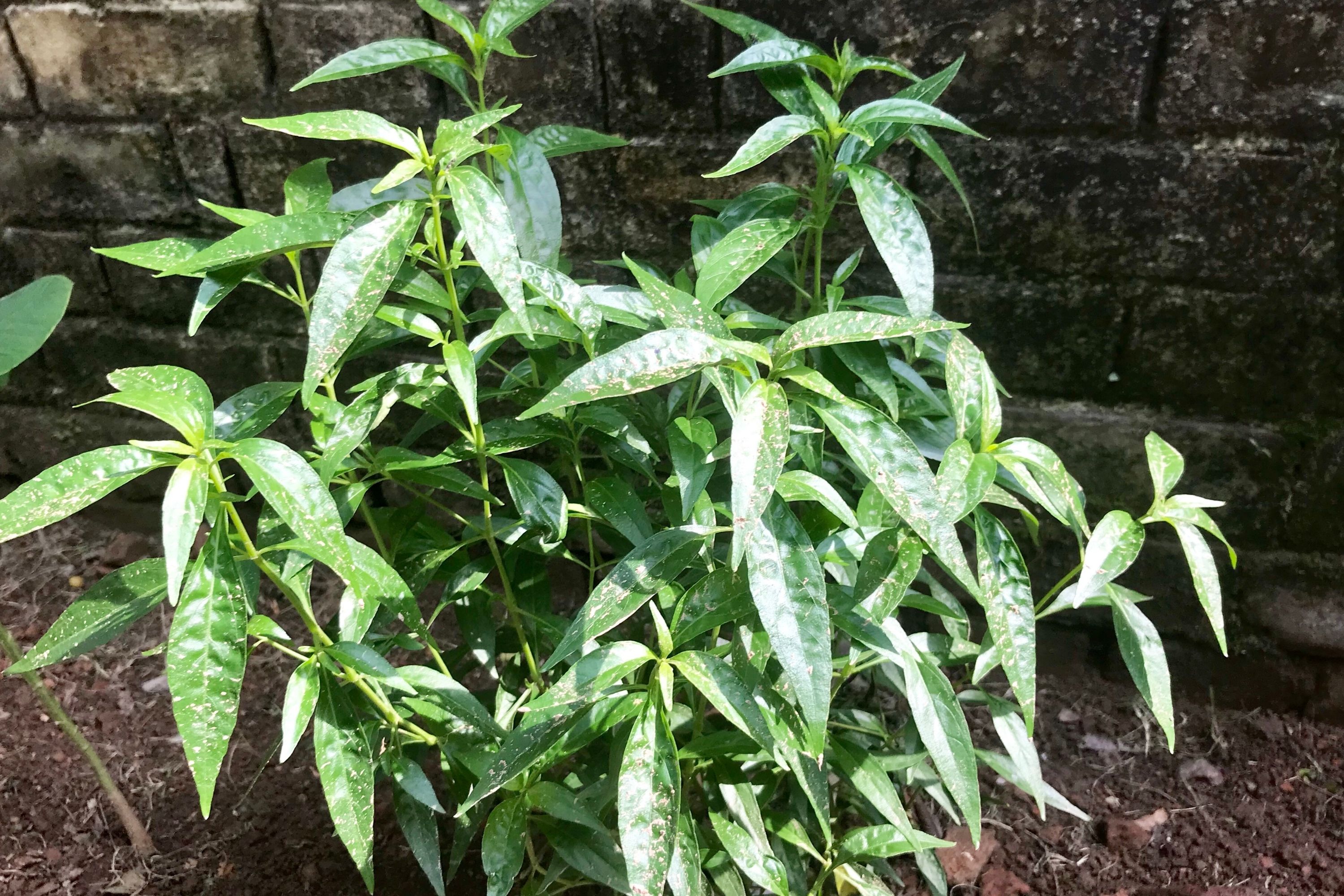Green chiretta
(Andrographis paniculata)

Description
Andrographis paniculata, commonly known as creat or green chiretta,is an annual herbaceous plant in the family Acanthaceae, native to India and Sri Lanka. It is widely cultivated in Southern and Southeastern Asia, where it has been believed to be a treatment for bacterial infections and some diseases. Mostly the leaves and roots have been used for such purposes; the whole plant is also used, in some cases. The plant grows as an erect herb to a height of 30–110 cm (12–43 in) in moist, shady places. The slender stem is dark green, square in cross-section with longitudinal furrows and wings along the angles. The lance-shaped leaves have hairless blades measuring up to 8 cm (3.1 in) long by 2.5 cm (0.98 in). The small flowers are pink, solitary, arranged in lax spreading racemes or panicles. The fruit is a capsule around 2 cm (0.79 in) long and a few millimeters wide.It contains many yellow-brown seeds. The seeds are subquadrate, rugose and glabrous. The flowering time is September to December. The species is distributed in tropical Asian countries, often in isolated patches. It can be found in a variety of habitats, such as plains, hillsides, coastlines, and disturbed and cultivated areas such as roadsides and farms. Native populations of A. paniculata are spread throughout south India and Sri Lanka which perhaps represent the center of origin and diversity of the species. The herb is an introduced species in northern parts of India, Java, Malaysia, Indonesia, the West Indies, and elsewhere in the Americas. The species also occurs in the Philippines, Hong Kong, Thailand, Brunei, Singapore, and other parts of Asia where it may or may not be native. The plant is cultivated in many areas, as well. Unlike other species of the genus, A. paniculata is of common occurrence in most places in India, including the plains and hilly areas up to 500 m (1,600 ft), which accounts for its wide use. Andrographis is a genus of flowering plants in the family Acanthaceae. They may be generally known as the false waterwillows, and several are called periyanagai. The species are native to the Indian subcontinent (including Myanmar, Sri Lanka and the West Himalaya region). Many are endemic to India. They may be herbs or shrubs. They are introduced and/or cultivated in Southeast Asia and some areas around the Caribbean. Some species are used medicinally. The best known is Andrographis paniculata, which is valued in Ayurveda, Unani, and Siddha medicine.
Taxonomic tree:







